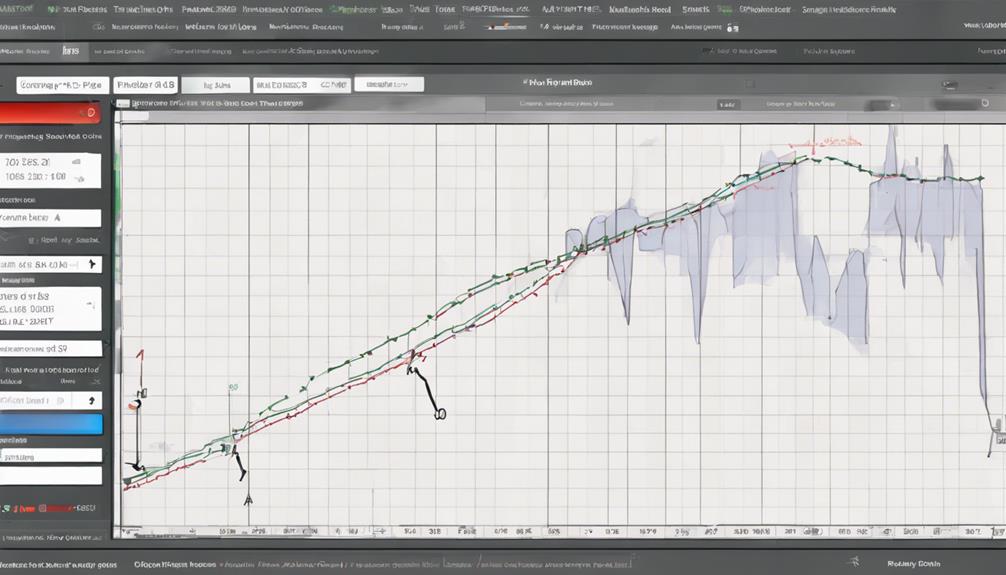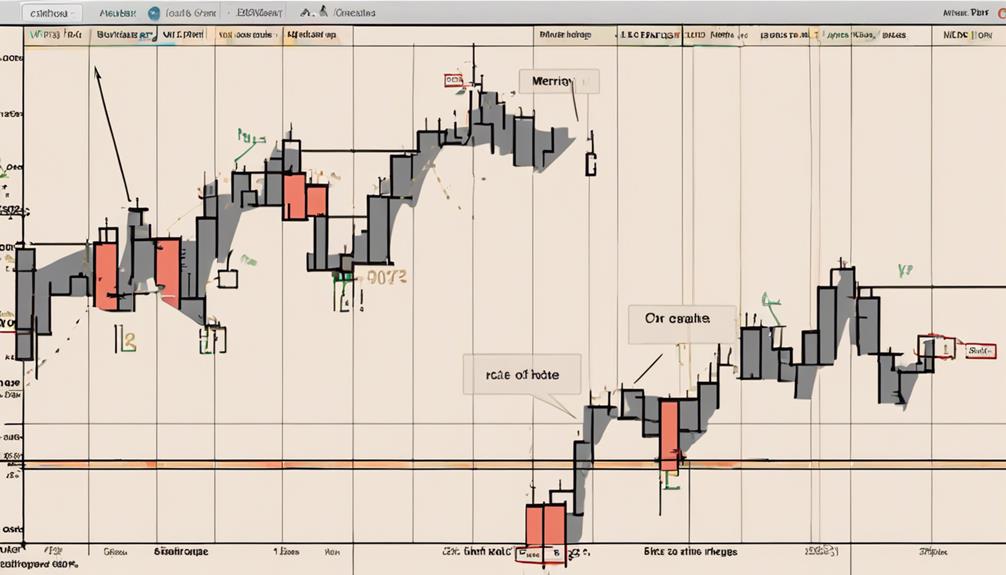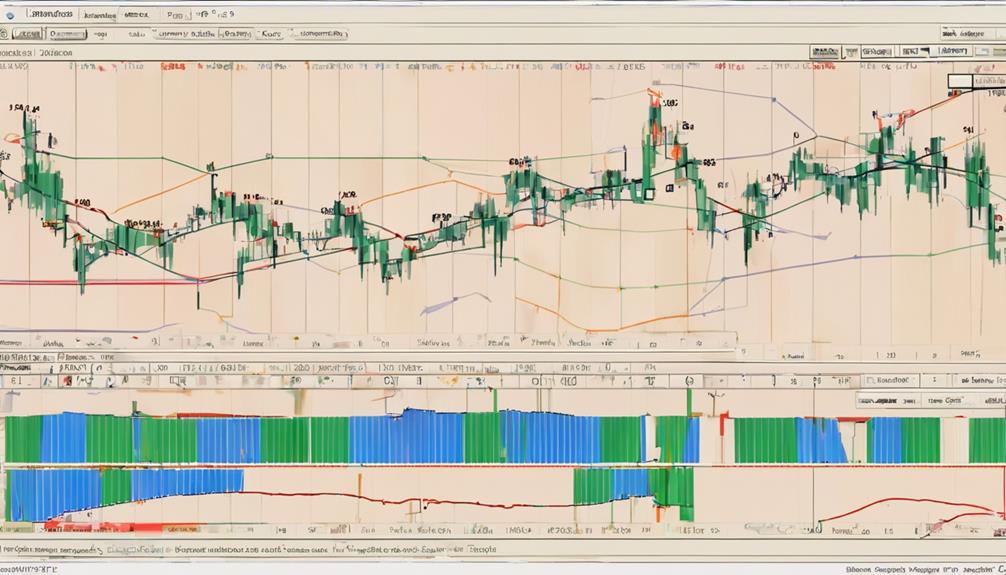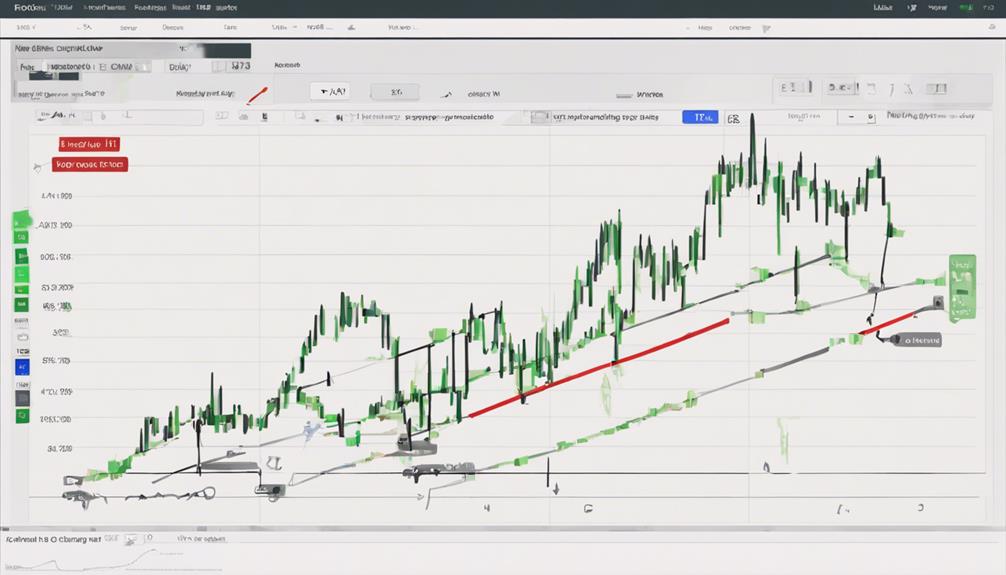The ROC Indicator serves as a crucial tool for novice traders aiming to grasp the intricacies of market momentum and potential trend shifts. Its ability to gauge the speed of price changes offers traders valuable insights into overbought or oversold conditions, aiding in decision-making processes.
However, understanding the basics, calculating the rate of change, and interpreting the signals provided by the ROC indicator are just the initial steps. Delving deeper into how this indicator can be effectively utilized in conjunction with other technical tools to formulate successful trading strategies is where the true potential lies.
Understanding the ROC Indicator Basics
In grasping the fundamental concepts of the ROC (Rate of Change) indicator, novice traders must comprehend its key function in quantifying the percentage shift in price over a specified number of trading periods.
The ROC indicator, a momentum oscillator, compares the current closing price to the closing price n periods ago. This comparison provides traders with valuable insight into the rate at which the price of an asset is changing.
When the ROC value is above zero, it indicates a bullish sentiment, suggesting an upward price trend. Conversely, ROC values below zero signify bearish sentiment, signaling a potential downward price movement.
The ROC indicator is typically plotted against a zero line, and crossings of this line can serve as signals for potential trend changes. Novice traders can leverage the ROC indicator to identify market momentum shifts and make informed decisions regarding entry and exit points in their trades.
Calculating the Rate of Change

Having understood the fundamental concepts of the ROC (Rate of Change) indicator, the next crucial step is to delve into the process of calculating the rate of change.
The Rate of Change (ROC) indicator determines the percentage change between the current closing price and the price from n periods ago. The calculation formula for ROC is [(Current Close – Close n periods ago) / (Close n periods ago)] X 100. Common values for n periods used in ROC calculations are 14, 9, 25, and 200.
When the ROC value is above zero, it signifies a bullish sentiment, indicating an increase in price. Conversely, ROC values below zero indicate a bearish sentiment, reflecting a decrease in price.
While the ROC indicator does not have defined overbought or oversold levels, it is valuable in identifying potential trend changes in the market. By calculating and analyzing the ROC, traders can gain insights into the momentum and direction of price movements for informed decision-making in trading scenarios.
Interpreting ROC for Trading Signals

Interpreting trading signals through the Rate of Change (ROC) indicator involves analyzing the momentum and direction of price movements in financial markets. When using ROC for trading signals, traders should consider the following:
- Identifying Trends: ROC above zero indicates a bullish trend, while ROC below zero signifies a bearish trend. Traders can use this information to align their trades with the prevailing market sentiment.
- Overbought and Oversold Levels: ROC helps in pinpointing overbought and oversold levels by comparing current price action to historical data. This can assist traders in making informed decisions about potential trend reversals.
- Divergences: Bullish and bearish divergences in ROC can signal potential shifts in momentum. Traders can use these divergences as early indications of trend changes and adjust their trading strategies accordingly.
Incorporating ROC With Other Indicators

When combining the Rate of Change (ROC) indicator with other technical tools, traders can enhance their analysis and achieve more robust trade confirmations. By incorporating ROC with indicators like Stochastics, traders can better identify potential trend reversals and market entry points.
Looking for confluence signals between ROC and Stochastics can further strengthen trading decisions. Additionally, using moving averages alongside ROC can offer confirmation of the prevailing trend direction, aiding traders in making more reliable choices.
The integration of ROC with various technical analysis tools provides traders with a more comprehensive view of the stock market dynamics, leading to improved decision-making processes. Novice traders particularly benefit from utilizing ROC in conjunction with complementary indicators, as this approach can enhance the effectiveness of their trading strategies and ultimately contribute to better trade outcomes.
ROC Strategies for Novice Traders

Utilizing the Rate of Change (ROC) indicator effectively is paramount for novice traders seeking to develop strategic trading approaches based on market trends and momentum. Novice traders can benefit from employing ROC strategies to enhance their trading skills and make informed trading decisions.
- ROC strategies for novice traders focus on using the indicator to identify trends and momentum in the market.
- Implementing simple ROC trading strategies can help novice traders confirm price movements and potential trend reversals.
- Novice traders can gauge the speed of price changes by interpreting ROC values, enabling them to make trading decisions based on the indicator's signals.
What Are the Benefits of Using the ROC Indicator for Novice Traders?
The essential swing trading ROC indicator is an invaluable tool for novice traders. It helps identify potential trend reversals, leading to better entry and exit points. By analyzing price momentum, traders can make more informed decisions and improve their overall profitability.
Frequently Asked Questions
What Trading Indicator Is Good for a Beginner?
A suitable trading indicator for beginners is one that offers simplicity and clear signals, aiding in price momentum interpretation. Novice traders benefit from tools like the ROC indicator, which identifies market conditions and potential reversals effectively.
What Does the ROC Indicator Tell You?
The ROC indicator provides insights into price momentum, indicating bullish trends with rising values above zero and bearish trends with falling values below zero. It aids in identifying overbought or oversold conditions and potential trend changes with zero line crossovers.
Is ROC a Good Indicator?
ROC is a valuable tool for novice traders, offering insights into market conditions. It aids in identifying overbought or oversold scenarios. Its simplicity and ability to indicate bullish or bearish sentiment make it a good choice for traders.
What Is the 2 Period ROC Indicator?
The 2-period ROC indicator measures the rate of change between the current close and the close 2 periods ago. It offers immediate insights into short-term momentum, aiding traders in swift decision-making. This tool is valuable for identifying entry and exit points effectively.
Conclusion
Overall, the Rate of Change (ROC) indicator serves as a valuable tool for novice traders looking to analyze price momentum and potential trend reversals in the market. By understanding how to calculate and interpret ROC values, traders can make informed decisions when trading financial assets.
Incorporating ROC with other indicators can further enhance trading strategies and improve overall trading performance. In the fast-paced world of trading, mastering the ROC indicator can give traders a competitive edge in the market.
